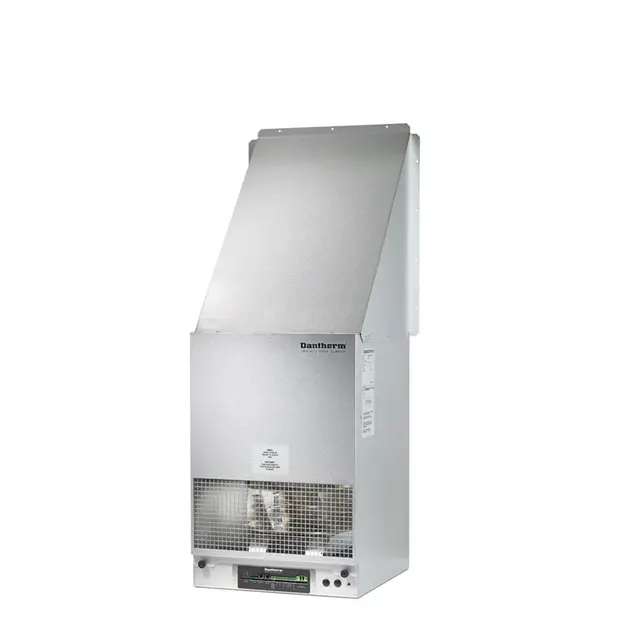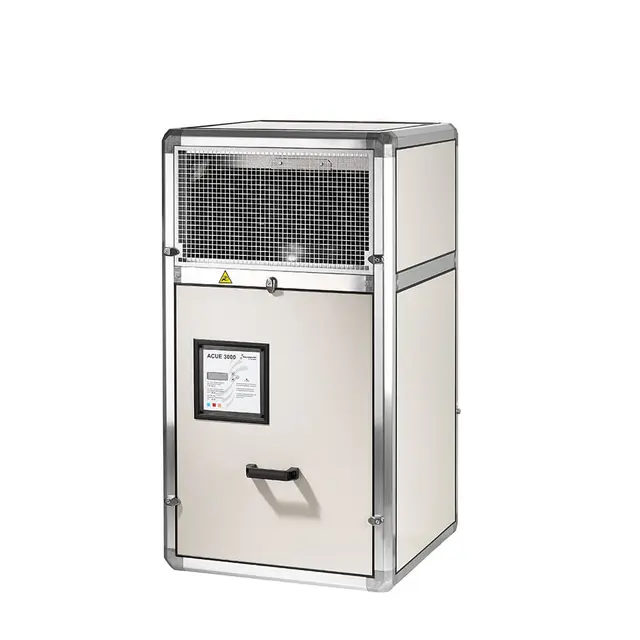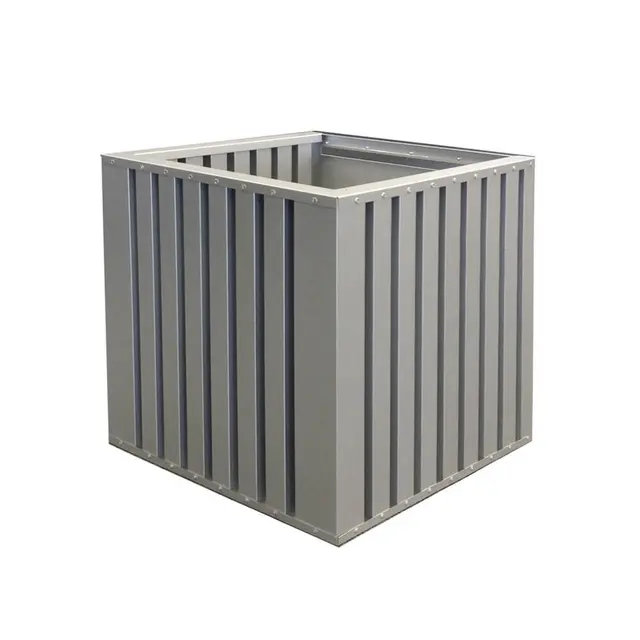Dual Cooling Zones: An energy saving strategy for telecoms and data centres

- Home
- Insights
- Cooling insights
- Dual Cooling Zones: An energy saving strategy for telecoms and data centres
In this article, you’ll learn how implementing a dual cooling strategy can maximise efficiency across your facility. Plus, how we helped one of our telecoms clients reduce their energy consumption by 32%.
Equipment in data centres and telecoms facilities is sensitive to many conditions. While shelters protect them from the elements, high temperatures are one of the most common reasons for equipment downtime – a disruptive and very costly issue for telecoms providers and data centre operators.
To protect equipment from the risks of overheating, high capacity air-conditioning is the traditional approach. While this solution works well to prevent critical damage caused by overheating, it comes at a high cost in energy efficiency. In large facilities that house vast collections of servers and equipment, the constant running of air-conditioning equates to a significant proportion of operating costs.
While free cooling is one of the most effective and energy-efficient solutions for data centres and telecoms facilities, every facility will have its own unique features. Where possible, we always work with providers and operators to establish a bespoke cooling strategy. Dual cooling is one such example.
What is a dual cooling strategy?
While the majority of electronic equipment is sensitive to temperature, some have different requirements than others. Batteries and Uninterruptible Power Supply (UPS) equipment, for example, typically require a ‘below shelter temperature’ of 20°C-30°C, while radio and power equipment typically require an ‘above ambient temperature’ of 30°C-55°C.
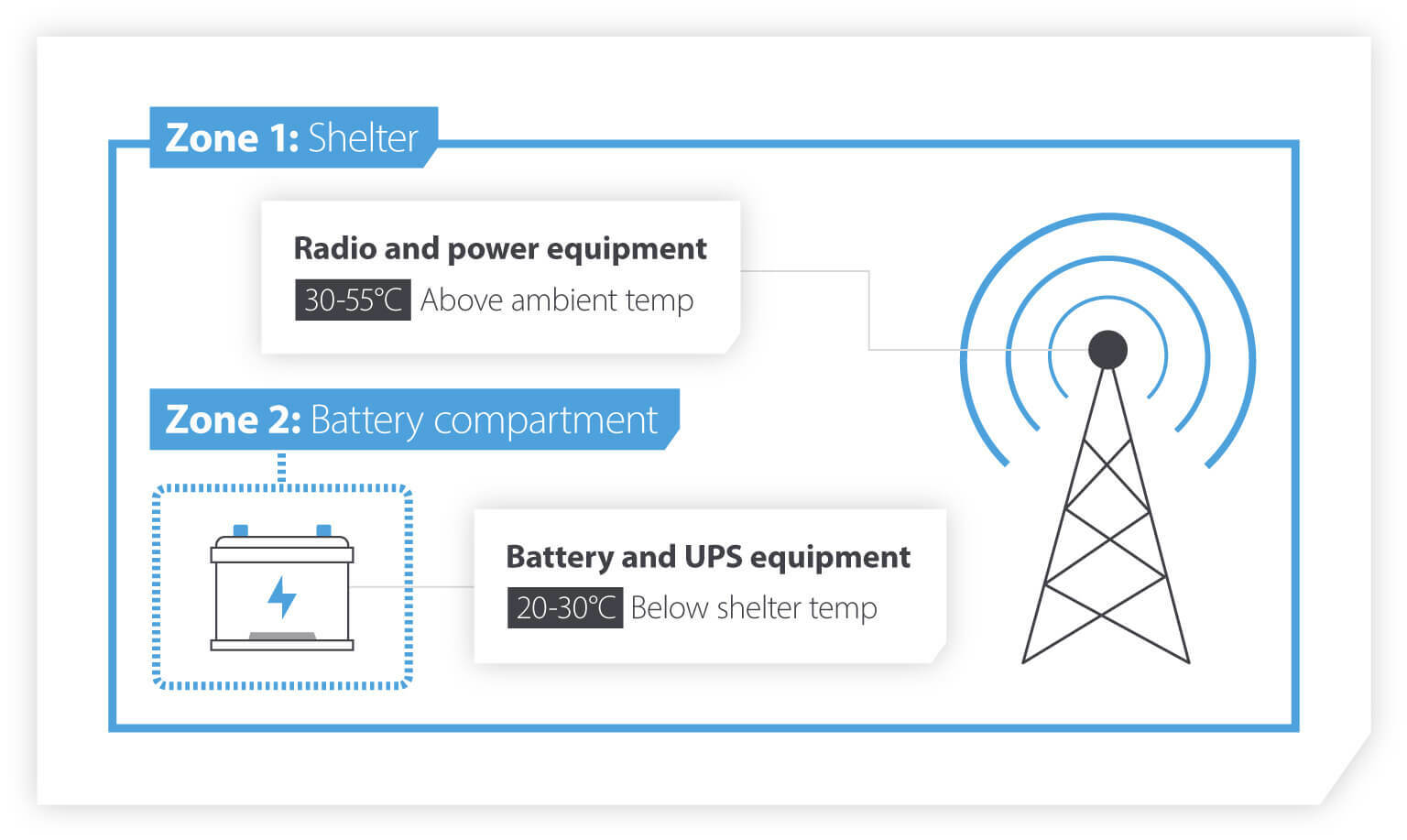
Creating two zones allows you to reduce the reliance on energy-intensive active cooling (such as air-conditioning), and make better use of energy-efficient free-cooling by housing batteries in an insulated box where it will not be affected by the higher ambient temperature.
How does dual cooling reduce energy consumption?
Using the principles noted above, one of Dantherm’s clients, a Spanish broadband provider and telecoms operator, reduced energy consumption by 32%. Here’s how we made it happen:
The challenge
When they came to Dantherm, our client’s aim was to reduce energy consumption by at least 20% in more than 100,000 shelters housing radio transmission equipment and battery racks. Maintaining a constant temperature of 23°C to protect the batteries, they had identified their current cooling set-up, a traditional air-conditioning system and free cooling backup, as a major contributor to energy usage.
In particular, they were interested in a new solution that would protect all enclosed electronics, in spite of different temperature sensitivities of radio transmission equipment and batteries.
The strategy:
Following site visits, a specific cooling need analysis, and specifications from the customer, Dantherm established a test site to create individual cooling zones for radio transmission equipment and batteries.
The solution
Step 1. Creating Dual Cooling Zones
Using a purpose-built insulated box, we isolated the batteries from the radio transmission equipment to enable separate cooling in two zones within the same room.
Step 2. Raising the site temperature
The main site (zone 1) can be raised to 38°C without damaging the radio transmission equipment, while the battery box (zone 2) is cooled to 23°C.
Step 3. Maximising free cooling
With a higher main site (zone 1) temperature, free cooling can be used across the majority of the facility in place of traditional energy-intensive air-conditioning when ambient temperatures are below the temperature set point.
The results
The combined and reallocated use of free cooling and air-conditioning created significant energy savings.
After implementing our new strategy, our client reduced the need for active cooling (air-conditioning) by 62% – reducing its use from 24 hours a day to 9 hours a day on average.
In terms of energy consumption, the overall reduction amounted to a massive 32%. (As an added bonus, less strain on the air-conditioner will reduce its wear and prolong its lifespan).
Discover how much your facility could be saving
For more on the energy-saving benefits of a dual cooling strategy, or to learn about any of our climate control technologies for telecoms and data centres, get in touch with our expert team using the form below.
Related products
Featured insights

Why free cooling keeps electronic devices cool for less than traditional air conditioning systems

A quick comparison between the two technologies
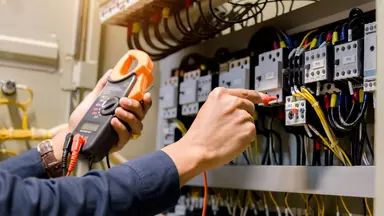
Monoblock and split air-conditioning solutions for telecoms
Need help with choosing the right solution? Our team of over 100 climate control experts can assist.
You can also reach out or join the discussion on our Social Media. Check out our LinkedIn page.
